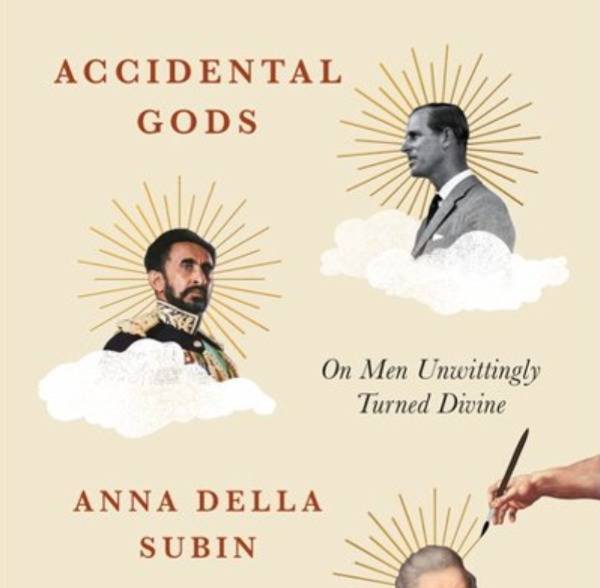
This article is a preview from the Summer 2019 edition of New Humanist
The first illustrated tour guide to be published in Britain, in 1782, was the Rev. William Gilpin’s Observations on the River Wye. After Gilpin waxed rhapsodic on the beauty of mid-Wales, many visitors followed, further extolling the dramatic landscape in writing, paintings and engravings. In 1862, the travel writer George Borrow published Wild Wales: Its People, Language and Scenery. Borrow was a relative latecomer to the craze, but his title is typical of the image the country retained for outsiders: it was “wild”, untamed and untainted by modern industrial civilisation, and defined as much by its landscape as by those who lived there. Before the late 18th century, Wales had been seen as backward and comical, represented in contemporary cartoons by the impoverished bumpkin “Poor Taff”. The upsurge of Romantic interest in the Celtic nations, however, saw Wales begin to be admired for the pre-modern qualities that had formerly seen it mocked. This cultural trend saw the promotion by a Welsh literary and artistic elite of reinvented images of the Welsh past, while Welsh exiles in London formed societies supposedly drawing on Druidic lore. The London-based scholar, eccentric and political radical Iolo Morganwg capitalised on this Romantic mania with his revival of the Gorsedd of Bards, an ancient order of poets safeguarding Welsh language and culture, from which he claimed descent.
Throughout the 1830s and 40s, the boom in mass tourism occasioned by the expansion of the railway network into Wales also reinforced Romantic ideals. Artists and publishers sold mass-produced prints and postcards showing “typical” Welsh scenes, which may have borne little relation to contemporary Welsh life but contained instantly and widely recognised visuals: the mountainous landscape, the market-day or Eisteddfod festival, and above all the female figure in “traditional” Welsh dress, deliberately posed at spinning-wheels or harps or in the doorway of quaint hillside cottages.
This quickly-established cultural icon was a typical Romantic mixture of the authentic and confected: in the 1830s, Welsh aristocrat Augusta Hall, Lady Llanover, had invented or homogenised an elaborate template for Welsh national costume from her observations of the clothing worn by local female agricultural workers. Despite their dubious authenticity, such images were received as representing the kind of traditional folk-culture which, according to the Romantic ideal, was elsewhere being eroded by the forces of industrialisation and urbanisation.
Within Wales, the appeal of what historian Eric Hobsbawm called the “invention of tradition” was obvious: the ancient glories of bards, druids and quirkily-costumed women provided emotional succour for those experiencing a miserable present and uncertain future. There was an unsustainable disparity between Romantic ideals of Wales and the reality of rural poverty and depopulation, or the unrest and deprivation in industrialised parts of the country. In 1847 an inquiry by the British government into the state of education in Wales produced the prurient Blue Books, a three-volume report portraying the Welsh as ignorant and immoral, and Welsh women in particular as promiscuous and licentious. Written by commissioners who spoke no Welsh and often repeated wholesale the biases of landowners and Anglican clergymen, the Blue Books provoked outrage in Wales and inspired a political and cultural effort to challenge views of the country as primitive and degenerate by offering an alternative public image shaped by the Welsh themselves. This attempt, blending nonconformist Christianity and the Welsh language into an increasingly coherent national identity, emphasised a show of temperance and chasteness in response to the Blue Books’ calumny. Cultural images of sober and dignified Welsh men and women played a significant part in this.
As the 20th century progressed, Wales became defined by more reliably modern images: from award-winning male voice choirs and success on the rugby pitch to industrial strife. In 1929 the US singer Paul Robeson, touring in London, was intrigued to meet a group of unemployed Rhondda coalminers singing in the street after their participation in a hunger march. Rapidly drawn into labour movement struggles, Robeson made regular subsequent visits to Welsh mining communities, and in the 1940 film The Proud Valley, filmed in the South Wales coalfield, he dramatised the experience of being embraced across racial lines through a shared love of music.
Robeson and The Proud Valley brought together several emblematic tropes – political radicalism, community solidarity, mining and choral singing – that are still residually associated with Wales, differing sharply from the older Romantic images of harps and spinning-wheels. The visibility of Welsh coalmining in the 1920s and 30s, in fact, came as deindustrialisation and mass unemployment cut a swathe through the country’s mining communities, already rendering these iconic images a relic.
A handful of mid-century Welsh cultural achievements offered very different images. The international success of singers like Shirley Bassey and Tom Jones not only defined a musical style that would remain distinctive for decades to come, but also further modernised ideas of the country – still musical, but no longer limited to male voice choirs. Bassey’s celebrated upbringing in Cardiff’s Tiger Bay, a dockside community formed by generations of migrant sailors and workers, helped to make visible the city’s strong multicultural tradition and disrupted assumptions of Wales’s cultural homogeneity.
From the 1960s onwards, the Welsh nationalist movement gathered popular strength and support. This upsurge was nurtured by Welsh-language music and drama, with folk-singers and community theatre groups making it a more grassroots than elitist demand for the defence of Welsh culture, especially as vested in its language. After more than a decade of agitation, including the attempted bombing of the Prince of Wales’s investiture at Aberystwyth and a hunger strike by Plaid Cymru MP Gwynfor Evans, the Conservative government established a Welsh-language TV channel, Sianel Pedwar Cymru (S4C), intended to allow Welsh people a measure of control over their own cultural discourse.
But as the rural “heartlands” defended and strengthened their culture, industrial Wales suffered a further cultural collapse with the Thatcher government’s escalation of deindustrialisation and conclusive devastation of coalmining. Rather than engaging with contemporary social issues, Welsh television was dominated by historical dramas like Y Palmant Aur which explored the 1920s migration of Welsh families to London – exemplifying the tendency of Welsh culture to rely on looking backwards rather than imagining a future.
This made “Cool Cymru”, the Britpop-adjacent rise of Welsh bands like the Manic Street Preachers, Super Furry Animals and Catatonia, something of a surprise. Many of these bands had their roots in earlier musical subcultures, including 1980s postpunk and the Welsh-language scene. Their explosion into mainstream prominence in the 1990s was linked with the sense of new possibilities occasioned by New Labour in government and the establishment of a Welsh Assembly in 1998. Even though Cool Cymru saw Top Ten comebacks for both Shirley Bassey and Tom Jones, the scene’s uncharacteristically forward-looking nature seemed to finally render ancestor-worship unnecessary. Nineties Welsh culture also abandoned reliance on outdated images: the 1997 film Twin Town, set in a drug-soaked Swansea underworld, showcased a markedly more modern Wales than the twee stereotypes offered only two years earlier in The Englishman Who Went Up a Hill and Came Down a Mountain.
More recent S4C productions like Hinterland, and novels like Swansea-born Joe Dunthorne’s Submarine, have continued to transcend stereotypes, either dealing with the complexity of modern Wales or offering more universal tropes. The brash comic creations of writer and actor Ruth Jones in Gavin and Stacey or Stella may play on previous Welsh female archetypes, but possess an unapologetic modern twist. The 2014 film Pride, despite somewhat sacrificing historical accuracy for its heart-warming finale, was a welcome reminder of the little-known solidarity between 1980s LGBT activists and striking Welsh miners. Noreena Shopland’s 2017 book Forbidden Lives was another step forward in depicting the almost wholly unexplored fluidity of gender and sexuality in Welsh cultural history.
Contemporary images of Wales still frequently rest on Victorian ideals of an untouched pre-industrial wilderness, or, drawing on the structural unemployment that plagues much of the country, emphasise its post-industrial bleakness. The growth of independent and social media inside the country, however, has allowed challenges and disruptions to these images as well as their confirmation. Outlets like Desolation Radio and the Nation.Cymru website are helping to articulate internal social and political debates and to reconcile the country’s past and present. While British perceptions of Wales may not have substantially broadened for several decades, Welsh culture itself has shifted from accepting its external romanticising to fighting for self-expression.

